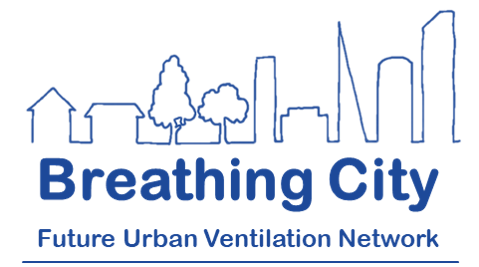In April, members of the TAPAS network, the FUVN network, the CSTB and the OQAI met to discuss national indoor air quality strategies in France and the UK. The meeting of these four initiatives, together with invited experts from academia, industry and government science organisations, happened over two days in Paris and involved a series of presentations and workshops. A key focus of the meeting was on “observing indoor air” – how we can develop coordinated approaches to capturing data on indoor air quality at scale and over long periods of time and how this can be used to understand health effects and support policy and practice. The knowledge sharing and informative discussions will shape both the French and UK networks’ future indoor air quality studies and campaigns.
The UK networks, TAPAS and FUVN, are 3 year funded projects designed to bring together stakeholders across academia, education, public health, policy, civil society and business. TAPAS (Tackling Air Pollution At School) works together to support the development of healthy schools by improving air quality. FUVN (the Future Urban Ventilation Network) is creating a strategy for a holistic approach to clean indoor air by considering coupled indoor-outdoor flows. FUVN also considers current and future air quality challenges together with their impacts on thermal comfort, noise and energy use. They are two of six Clean Air projects funded by the UK’s UKRI Strategic Priorities Fund programme.
The CSTB is the French Scientific and Technical Center for Building and is a public industrial and commercial company, aiming to serve its clients and the public interest. It mobilizes its expertise to support public policy decision-makers, the builders and users of buildings and the urban environment. The OQAI (Indoor Air Quality Observatory), commissioned by the French Public Authorities and operated by the CSTB, aims to better understand indoor air pollution and its origins, in particular through measurement campaigns. This work is essential to provide solutions adapted to the prevention and monitoring of this pollution, by raising awareness among professionals and the general public.
The French Indoor Air Quality Observatory has been operating since 2001 and has been a source of inspiration to air quality researchers and public health professionals. The Observatory brings together over a hundred researchers, professionals, technical staff and doctoral students from various disciplines to plan, implement and analyse a number of field and laboratory studies to answer some key questions:
- What is the comfort and air quality in our living spaces?
- What determines the quality of indoor environments?
- What can be done to improve the situation in the buildings?
The results of these studies are used to raise the awareness of professionals, inform the general public and influence policy through for example informing regulations on materials, equipment, maintenance and construction practices as well as product labelling.
Some examples of the observatory’s studies include:
- Assessment of ventilation and indoor air pollutants in nursery and elementary schools in France. This study showed that 40% of schools measured had at least one classroom with “poor” air quality (as measured by the ICONE Air Stuffiness Index), and the average concentration of PM2.5 exceeded the WHO guidelines.
- Measurement of carbon dioxide levels in Paris Schools (with AirParif, the organisation responsible for monitoring outdoor air quality in Paris metropolitan area). This study deployed 300 sensors in 110 schools to evaluate the impact of the presence of a sensor on ventilation practices. The study showed that 57% of the participants changed their ventilation practices following the arrival of the sensor leading to more efficient and effective ventilation strategies.
The UK already has numerous air quality and public health studies, and the meeting discussed how these could feed into a coordinated approach through a national indoor air quality observatory.
Some examples of such studies in the UK include:
- Breathe London Wearables is a large scale study that characterised school children’s exposure to air pollution during a typical school week using low-cost sensors. By monitoring the air quality 24/7, ventilation efficacy and air pollution hot-spots were identified throughout a typical day.
- Born in Bradford is tracking the lives of over 30,000 citizens (including the study of 13,500 children from birth) to find out what influences the health and wellbeing of families. Findings from rigorous and applied health research studies are used to develop new and practical ways to work with families and health professionals to improve the health and wellbeing of our communities.
Many of the UK studies discussed demonstrated a strong track record of public participation in scientific research. This has been achieved through involving the public in defining the initial research questions, developing hypotheses, designing data collection methodologies and in collecting and analysing the data. This educates and empowers project partners and the public to enable them to clearly disseminate the findings to their communities, influence behavioural change and develop new research questions.
By amalgamating existing studies on, for example, indoor air quality in schools, children’s health, and ventilation practices in homes, a clearer picture of how indoor air quality affects public health in both France and the UK can be realised and appropriate clean air strategies can be implemented. In addition, following the French methodology, the evidence gathered from the combined studies can be used to shape UK public health policy and building/product regulations as well as identifying areas where additional studies are required.
The ongoing knowledge exchange between the scientists, policy makers and practitioners in the UK and France will strengthen future measurement campaigns, advance the interpretation of data, and identify new pathways to impact for improving indoor air quality for the general public.


